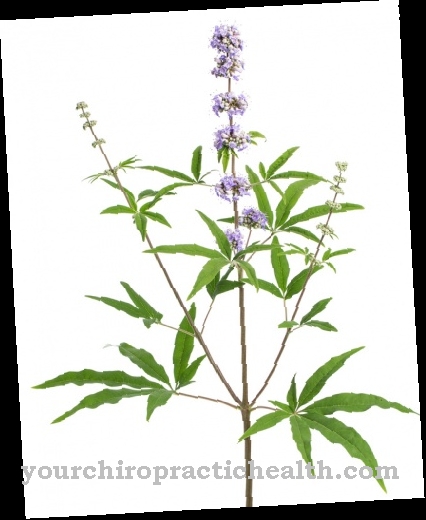Cabbage used to be more of a food for poor people. It has the potential to alleviate certain ailments and diseases. It represents a helpful alternative to conventional medicine without the side effects associated with the use of cabbage for medicinal purposes.
Occurrence & cultivation of cabbage

Different types of are suitable for the treatment of diseases Cabbage. White cabbage and savoy cabbage are particularly effective and diverse. The white cabbage is not only used in different ways in the cuisine of numerous cultures, its use can be traced back to early history. The first mention can be found in a publication in 1073 in Russian chronicles.
White cabbage is not a seasonal vegetable, it is available all year round, which is due to the different varieties, which range from early to winter cabbage. The cabbage needs a nutritious soil to grow. Just before it can be harvested, it is greenish-white in color. In addition to vitamins, proteins and carbohydrates, it only contains a small amount of calories.
Both white cabbage and savoy cabbage originally come from Mediterranean areas. In the meantime, both types of cabbage are also grown in Germany, France and the Netherlands. In addition to white cabbage and savoy cabbage, red cabbage also has healing properties. Its color changes depending on the pH of the soil on which it grows. The more acidic it is, the redder the close-lying leaves of the cabbage appear.
Effect & application
Cabbage has a variety of treatment options. The differentiated forms in which the vegetables can be used for medicinal purposes are just as different. On the one hand, it is suitable for external use and, on the other hand, for internal disorders and complaints. The effect of cabbage is mainly due to its ingredients, which consist of a large number of different vitamins and other important elements.
In ancient Greece and Rome, doctors and scholars knew about the efficiency of cabbage varieties. At that time, for example, they were used for menstrual cramps. Nowadays scientists have proven that cabbage can also be used to lower cholesterol by binding the fiber to the bile acid. This in turn contains cholesterol, which can now be excreted in the stool. In addition, the cabbage leaves contain substances that inhibit the growth of cells and have a detoxifying effect.
Research to date has shown that there may be a correlation between these elements and the effect on wounds and injuries, although there is no clear scientific evidence yet. Instead, the results are increasingly based on observations that have shown that charcoal pads are supportive in painful conditions and poorly healing wounds.
Cabbage leaves are suitable for existing pain, while cabbage leaves are used for injuries. Before using, the leaves must be washed and dried. The large stem is cut out and the leaves are pressed flat until the juice comes out. Then the savoy cabbage leaves can be placed on the painful area and bandaged. In the case of open wounds, the cabbage leaves must be precisely cut and placed.
For internal use, it is recommended that the substances be absorbed through food. Cabbage is particularly often processed into sauerkraut. In this form it should also be possible for him to prevent cancer. The healthiest preparation pays attention to a short cooking time with a low to medium temperature. In addition, it is possible to take the active ingredients in juice, which has a particularly positive effect on existing gastrointestinal complaints.
Importance for health, treatment & prevention
The importance of cabbage to health should not be underestimated. On the one hand, it has the potential to have a preventive effect, on the other hand, it is suitable for treating existing complaints. It can be seen as a useful alternative to chemical drugs; side effects are not to be expected. Especially when used externally, only high hygiene standards have to be adhered to in order not to risk infection of open wounds.
Otherwise, due to certain proteins, the cabbage is suitable for the treatment of ulcers that can be localized in the stomach or duodenum. It prevents skin inflammation and supports wound healing in open injuries. The high vitamin content ensures that an existing vitamin C deficiency is compensated for or prevented. With the elimination of such a deficiency, other existing symptoms are simultaneously alleviated.
Based on its strong anti-inflammatory properties, cabbage also helps with rheumatism or inflammation of the gastric mucosa. At the same time, compresses can reduce the pain of those affected. It can also relieve discomfort in the bowel area. These include, for example, constipation. Due to its cholesterol-lowering properties, it may be able to prevent cardiovascular complaints such as heart attacks, because these are often based on high blood lipids.
Another preventive aspect is the prevention of cancer. The glucoinsolates and other components are suspected of actively counteracting tumors. Because cardiovascular diseases and malignant tumors are among the most common causes of death, cabbage can be ascribed a very high health importance. Its efficiency can be described as treating as well as preventive. Thus, it is not only suitable for numerous dishes, but should also be used outside the kitchen.




























